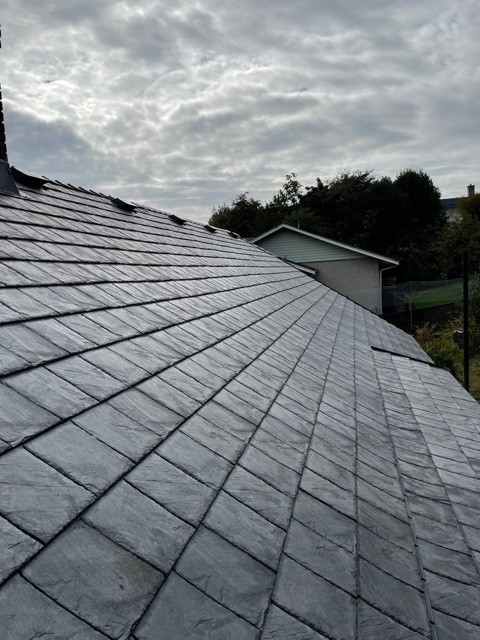Due to the recent developments in terms of environmental awareness, many homeowners have begun to seek ways to reduce the carbon footprint their homes extend. Unfortunately, one area that most homeowners often neglect is the roof.
What is unknown to many is that the roof can play a significant role in improving a home’s environmental friendliness. Roofing effects, like reducing energy consumption, can make your home more environmentally friendly.
In this article, we will highlight some top tips you can use to make your roof eco-friendly.
Reduce Energy Consumption
Reducing energy consumption is one of the most effective ways to make your roof more environmentally friendly. Here are some top tips to help you achieve this:
1. Use reflective or “cool” roofing materials
Using reflective roofing materials is a great way to reduce the heat your roof absorbs. With a reflective roof, you can reduce your energy bills since you will require less air conditioning to keep your home cool.
That being said, one viable option is installing a “cool” roof. These roofs usually have structures that enable them to reflect sunlight and its heat away from your home conveniently.
Through this process, you get to keep your home cooler.
Consider white or light-colored tiles, metal roofing, and reflective coatings if you want cool roof materials.
2. Install insulation to reduce heat loss
Insulation is another great way to reduce energy consumption. If you have proper insulation, you can keep your home warm in the winter and cool in the summer.
Consequently, keeping the temperature in your home at a comfortable rate can help you reduce the excess need for heating or air conditioning.
If you are thinking of insulating your home, there are several options you can choose from. Some of the most effective options include fiberglass batts, blown-in cellulose, foam insulation, etc.
Remember that the best option for you will depend on your climate, budget, and other factors.
3. Consider installing solar panels
Solar panels are a good option if you are looking for a way to reduce your energy consumption and carbon footprint. They can easily help convert sunlight into electricity to power your home.
Whenever you want to install a solar panel, ensure to hire the services of a reputable installer. You’ll also need to consider other factors, like the pitch and slope of your roof.
Additionally, you should consider any shading affecting how efficiently the solar panel can absorb sunlight.
Use Sustainable Materials
· Choose roofing materials made from recycled content
If you want to reduce your environmental impact, one thing you can do is use a roofing material that was built with recycled content. An example of this type of roof is the asphalt shingles.
· Consider using sustainable materials like metal or clay tiles
Metal roofing is one of the most popular choices for homeowners trying to reduce their environmental impact. Since it is very durable, it can last up to 50 years or more.
This means less time will go to waste for waste disposal.
· Avoid materials that contribute to deforestation or other environmental damage
Always consider the environmental impact of producing any roofing material you want to use. For instance, to create roofing materials like wood shingles, you must engage in deforestation and other environmental damage.
To make your roof more environmentally friendly, avoid materials that have a high environmental impact. Instead, opt for sustainable materials like metal, clay, or recycled-content roofing products.
Implement Green Roof Techniques
· Plant a green roof to improve insulation and air quality
Green roofs are the types of roofs that you involve planting vegetation on the roof of your home or building. It may eventually help to improve insulation.
Consequently, this can help reduce energy consumption and lower your energy bills.
When you start planning to plant a green roof for your home, you should ensure to choose the right plants for your climate. Also, consider the best types that can suit the roof and the condition of the roof.
· Install rainwater harvesting systems to reduce runoff
If you already have a green roof, you can think about adding a rainwater harvesting system. These systems can help you collect rainwater runoff from your roof and store it for later use.
When you put the runoff of the rainwater to good use, you can reduce your water bill. Additionally, by collecting rainwater, you can help to reduce stormwater runoff.
Maintain Your Roof
· Inspect your roof regularly for damage
Ensure to schedule regular inspections for your roof. With regular inspection, you can easily catch any damage or wear and tear early on.
Hence, you can prevent more extensive damage that could have occurred along the line. Try to inspect your roof at least once a year or after any severe weather events.
· Clean your roof to prevent mold and mildew
You must clean your roof. Cleaning your roof can help to prevent the growth of mold and mildew. When you want to clean the roof, use a gentle cleaning solution and a soft-bristled brush or pressure washer to clean your roof.
While at it, don’t forget to wear protective gear like gloves and goggles, and you should avoid using harsh chemicals that can cause any environment.
· Consider adding a reflective coating to your roof
A reflective coating can help to reduce the amount of heat your home’s roof absorbs.
When choosing a reflective coating, look for environmentally friendly products. Another thing to look out for is products with high solar reflectance index (SRI).
Lastly, you should ensure the coating you want to apply is compatible with your roofing material.
Conclusion
When you make your roof more environmentally friendly, you are doing yourself and your environment a great service.
At Shoreline Roofing, we have experienced professionals that can help you choose eco-friendly and cost-effective roofing solutions. Simply contact us today to start making your home more sustainable.

